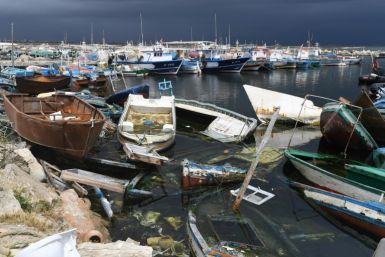Electricity costs bound to escalate in Australia
Australian businesses and households are urged to prepare for escalating electricity and gas prices beginning next year as the country struggles for environmental concerns.
An Australian Industry Group report released today, Energy shock: Confronting Higher Prices, which delivers a sobering message about the relentlessly increasing energy prices which are impacting on businesses and the community," Ai Group Chief Executive Heather Ridout said in a statement.
"This new research by Ai Group demonstrates that energy costs have risen substantially over the past five years and that there is no end in sight to these increases. It is clear Australian businesses and households need to prepare for escalating electricity and gas prices over the next decade.
"This report assesses recent developments and medium-term trends based on the latest data and a survey of more than 150 companies. It finds that by 2015 electricity prices are projected to at least double from 2008 levels.
"Australian industry is already grappling with the challenges of a strong dollar and an economy nearing capacity. Cheap energy has been a key source of competitive advantage for Australia in the past, and while Australia is far from alone in confronting rising energy costs, industry is going to have to adapt to higher prices than we have been used to.
"Greater energy efficiency is an obvious strategy. Efficiency has long been core business for large companies in energy-intensive sectors, but the coming price rises will require many other businesses to focus on efficiency too.
"Ai Group's survey, which included many smaller and medium sized companies, found nearly two thirds had not improved their energy efficiency over the past five years. Almost as many did not anticipate making improvements in the next two years.
"This is a worrying result. Ai Group will be working with members and governments to ensure that industry has the support it needs to get on the front foot to deal with this growing problem," Mrs Ridout said.
Key points of the study:
- Retail electricity prices expected to at least double from 2008 levels by 2015.
- Better support needed for many smaller and less energy intensive businesses yet to improve energy efficiency.
- A carbon price will add to growing energy cost pressures
- Renewable energy only a small part of the price story - less than 1% of the NSW retail electricity price in 2009-10, and reaching around 2-3% in 2012-13.
Price increases most significant for manufacturers who account for half of the $13 billion spent by Australian business on electricity.
The price increases have many drivers, the biggest of which to date have been the massive investment in transmission and distribution networks and movements in the wholesale markets driven by drought and the mining boom. The increased network investment is driven by general demand growth, surging peak demand, higher reliability standards and ageing legacy networks.
"The strong and ongoing escalation in material and labour costs will mean that new electricity generation capacity will be more expensive than in the past, even for conventional fossil fuel plants. Continuing high prices for exportable thermal coal will also push up costs for some generators.
"The coming boom in Queensland's Liquefied Natural Gas industry will have many important benefits for Australia, but it will also gradually push gas prices towards convergence with higher world prices - with consequences for both industrial gas consumers and gas-fired generators," Mrs Ridout said.
"With energy prices on an upward trajectory the need to have a well-designed carbon price is even more important and a badly designed carbon price will put even more pressure on energy costs. A well-designed carbon price, which could dampen the policy uncertainty that is damaging investment in new electricity generation, could also reduce the cost impact of the Renewable Energy Target.
"This would soften the blow of a carbon price, which nevertheless would be a big hit on business. Ai Group is working hard to ensure that any national climate policy does not erode the competitiveness of manufacturing or risk the continuity of our energy supply.
"Other Federal and State green policies have a cost too, from renewable energy subsidies to efficiency programs. These measures are a very mixed bunch. Some, like the Commonwealth's Small-scale Renewable Energy Scheme (SRES), splurge on the most expensive renewables instead of the cheapest, and pass the costs on to businesses and households.
"The SRES is expected to cost electricity consumers $1.12 billion in 2011. Investing the same amount in large scale wind would generate up to four times as much renewable energy every year.
"Yet despite the low quality of some of the spending involved, such green policies play only a small role in the current price rises, and in those to come," Mrs Ridout said.






